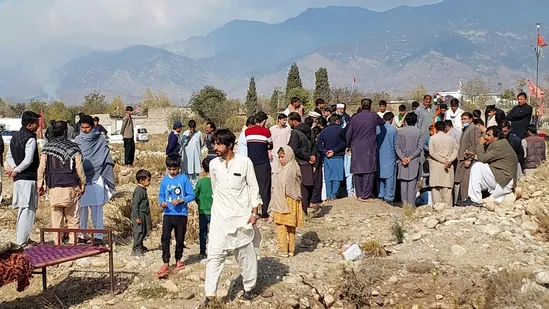People of different religions have lived peacefully across Pakistan for decades. In cities like Karachi, Lahore, Multan, Rawalpindi, Quetta, and Peshawar, Shia and Sunni communities coexist. However, the situation changes drastically in parts of Khyber Pakhtunkhwa, particularly in the Kurram District.
A significant number of Shias have lived in Khyber Pakhtunkhwa for centuries. As one moves beyond Kohat into the Hangu region, the demographic balance shifts. Hangu city and its surroundings, including Astarzai and Turi tribes, are predominantly Shia areas. Beyond Hangu lies Sherkot Spine Wada, a purely Shia region with shrines and an old Shia cemetery. Traveling further, one reaches Tal Bazar, a Sunni-majority area, and beyond Tal lies the Kurram District.
The Kurram district is deeply divided. Chapri is home to Sunni populations, while Alizai is entirely Shia. Tensions run high in areas like Alizai, Chapri, and Mandori, where brutal violence has erupted, including incidents where people were burned alive. Sadda Bazaar, the second-largest city in Kurram, is a Sunni-majority area. Beyond Sadda Bazaar, crossing the Kurram River leads to Balash Khel, a long-standing battlefield. This area, once home to Sunni residents, is now deserted.
The road from Hangu to Parachinar is the only route through Kurram. Parachinar, also known as Totkaye, is the largest urban center in Kurram. It offers better infrastructure, including hospitals, schools, and markets. The city’s boundaries stretch to the border areas of Tri Mangal, which are predominantly Sunni regions.
Whenever clashes erupt in Kurram, this crucial road is blocked, leaving people stranded for days. Residents have faced dire conditions, sometimes surviving on tree leaves. Patients have died waiting for medical help, and essential supplies become unavailable.
The Kurram region is also rich in resources like soapstone, nephrite, and gemstones. These resources are at the heart of land disputes between tribes, including the Turi community.
Hatred between Shias and Sunnis in Kurram has grown so deep that both sides exchange video threats and challenges. The conflict is a vicious cycle of revenge with no clear victor, only loss. Tragically, families living abroad often fuel the flames of this violence through social media.
The solution to this ongoing crisis is straightforward. If Waziristan residents can surrender illegal weapons, why can’t Kurram’s people? Land disputes could also be resolved through legal agreements, as seen in other parts of Pakistan. The residents of Kurram must make a collective decision for peace. Without action, this conflict will only claim more lives and deepen the scars on the region.


